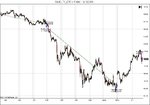Jason Rogers
Senior member
- Messages
- 2,772
- Likes
- 93
Re: Optimisation & out-of-sample periods - art not science
Hi Adamus,
If you're looking for raw data from FXCM, we have 1 minute data available for most pairs going back to 2001. The data can also be imported into the Strategy Trader platform. Here's where to find it http://forexforums.dailyfx.com/free...967-free-strategy-trader-historical-data.html
-Jason
(1) most of the FXCM data for my chosen forex pairs starts in 2008 - although I do have the data for the core forex pairs going back to 2006.
Hi Adamus,
If you're looking for raw data from FXCM, we have 1 minute data available for most pairs going back to 2001. The data can also be imported into the Strategy Trader platform. Here's where to find it http://forexforums.dailyfx.com/free...967-free-strategy-trader-historical-data.html
-Jason





